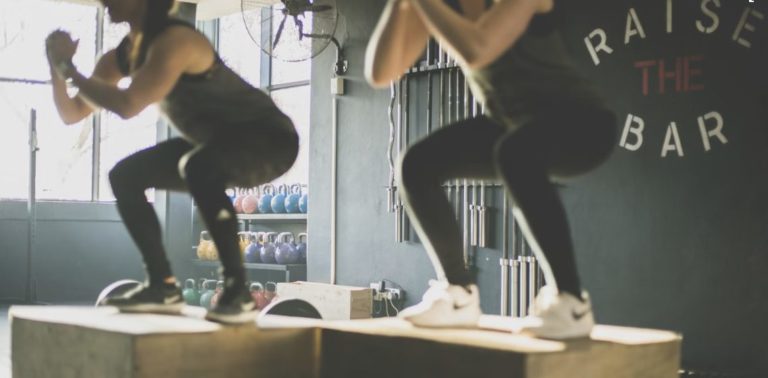How to Slip a Punch: Techniques and Tips for Effective Defense
Slipping punches is a critical technique in boxing that is often overlooked. While most people focus on the offensive aspects of boxing, the defense is just as important. A good slip can help you avoid getting hit, take away your opponent’s momentum, and set up your counterattack.
In this article, you will learn how to slip a punch step-by-step. Starting with a boxer’s stance, you will imagine a jab coming towards you, shift your head off center, and add some footwork. Additionally, the article will cover common mistakes that people make while slipping punches, such as slipping too far off center, overusing the slip while fighting, and not bending the knees. Finally, the article will discuss the benefits of slipping punches and provide a conclusion.
Key Takeaways
- Slipping punches is a crucial technique in boxing that can help you avoid getting hit and set up your counterattack.
- To slip a punch, you need to start with a boxer’s stance, imagine a jab coming towards you, shift your head off center, and add some footwork.
- Common mistakes when slipping punches include slipping too far off center, overusing the slip while fighting, and not bending the knees.
How To Slip A Punch
When it comes to boxing, slipping a punch is a defensive maneuver that can help avoid getting hit and set up a counter-punch. Here are the steps to slip a punch:
Start With A Boxer’s Stance
Before slipping a punch, it’s important to start with a proper boxer’s stance. A boxer’s stance involves keeping your hands up, chin and elbows tucked, and eyes up. Your weak foot should be your lead foot, and your body should be tilted slightly off-center. This will make your body smaller as a target. It’s important to relax and breathe, avoiding clenching your hands and forearms.
Imagine A Jab Coming Towards You
Mental preparation is important when it comes to slipping a punch. It’s important to imagine a jab coming towards your face. This mental visualization allows your mind to make the movement first before your body does. Mental visualization is an undertrained skill by beginners, but it’s crucial in boxing.
Shift Your Head Off Center
When the time comes to dodge a punch, it’s important to shift your head off-center towards your lead foot and downwards slightly right before the mental punch reaches your face. You can also slip towards your right side. This movement allows you to change your height level, an effective move in boxing. Moving your head off the Y-axis and X-axis allows you to change your height level and keep your body tight and balanced.
Add Some Footwork
Lastly, add some footwork by taking a small step in the direction that your head is slipping towards. If you’re slipping to the left, take a small step with your left foot while shifting your weight and keeping your balance. If you’re slipping to the right, take a small step with your right foot. This small step opens up a lot of possibilities, giving you the option to pivot and change the angle on your opponent or to set your base and prepare for a cross or a hook. Syncing your head with your feet’s movements results in strong defense.
In conclusion, slipping a punch is a defensive technique that requires practice, technique, and visualization. By starting with a proper boxer’s stance, imagining a jab coming towards you, shifting your head off-center, and adding some footwork, you can effectively slip punches and avoid getting hit.
Common Mistakes While Slipping Punches
Slipping punches is a fundamental technique in boxing that is used to evade incoming punches. However, beginners often make some common mistakes while slipping punches, which can lead to them getting hit. In this section, we will discuss some of the most common mistakes that beginners make while slipping punches.
Slipping Too Far Off Center
One of the most common mistakes that beginners make while slipping punches is going too far off center. This happens when the boxer slips too hard and moves far off center, which results in them losing their balance. It is important to keep in mind that the head contributes to a lot of the body’s weight. Therefore, slipping too hard can cause the boxer to be off balance and vulnerable to bigger punches.
To avoid this mistake, boxers should keep their slips subtle and controlled. A good slip should make the punch miss the side of the head by less than an inch or a couple of centimeters. This will allow the boxer to slip easily to the other side of their body while maintaining their balance.
Overusing The Slip While Fighting
Another common mistake that beginners make while slipping punches is overusing the slip while fighting. If a boxer bobs their head left and right repeatedly, their opponent will pick up on the timing of their pattern. This makes it easier for the opponent to predict the boxer’s movements and land punches.
To avoid this mistake, boxers should use the slip only when necessary. They should mix it up with other moves such as rolls or feints to make their movements harder to predict. This will keep their opponent guessing and make it harder for them to land punches.
Not Bending The Knees
The last common mistake that beginners make while slipping punches is not bending their knees. When a boxer bends their knees while slipping, they are able to change their height level and prepare their lower body for counters and power punches. Without this step, the boxer will just be bobbing their head side to side, which makes them vulnerable to bigger punches.
To avoid this mistake, boxers should bend their knees while slipping. This will allow them to change their height level and prepare their lower body for counters and power punches. By doing so, they will be able to slip punches more effectively and avoid getting hit.
In summary, slipping punches is an important technique in boxing, but beginners often make some common mistakes while doing so. These mistakes include slipping too far off center, overusing the slip while fighting, and not bending the knees. By avoiding these mistakes, boxers can slip punches more effectively and avoid getting hit.
Benefits of Slipping Punches
Slipping punches is an essential part of a boxer’s defense strategy. It allows the boxer to use his head and feet to evade punches and make the opponent miss. When a punch is missed, it costs the opponent more energy, both physically and mentally, than when a punch lands. This creates an opportunity for the boxer to disrupt the opponent’s rhythm and counterattack. Slipping punches requires good reflexes, timing, and endurance, and is considered an advanced boxing technique used by world champions such as Muhammad Ali and Floyd Mayweather.
Conclusion
In conclusion, slipping punches is an essential skill for boxers who want to avoid their opponent’s jabs while setting up their counterpunch. Beginners can practice visualizing a punch coming towards them when shadowboxing or use a slip bag to make their slips purposeful. Practicing throwing a jab and then slipping towards that side or slipping to the rear side and then throwing a cross are realistic combinations that boxers use every day. These combinations will test a boxer’s balance and control.
Learning how to slip transitions nicely into learning how to pull, which is stepping back with the rear foot and moving the head off center of the Z-axis. Rolling under a punch is another paired head and foot movement that works well with slips.
For those having trouble deciding what boxing equipment to get, there are articles available on the best boxing jump ropes, gloves, hand wraps, headgear, shoes, and groin protectors. By mastering the slip and other fundamental techniques, boxers can improve their overall performance in the ring.
Frequently Asked Questions
What are the basic techniques for beginners to slip a punch in boxing?
Slipping a punch involves moving the head and upper body out of the way of an incoming punch. The basic techniques for beginners to slip a punch include keeping the hands up, tilting the head slightly to one side, and stepping slightly in the opposite direction. Additionally, beginners should practice slipping punches at a slow pace and gradually increase speed as they become more comfortable.
What drills can be practiced to improve the ability to slip punches when training alone?
There are several drills that can be practiced to improve the ability to slip punches when training alone. One such drill is to tie a rope or string to a stationary object at head height and practice slipping punches to either side of the rope. Another drill involves standing in front of a mirror and practicing slipping punches while watching one’s own form.
How can speed and reaction time for slipping punches effectively be increased?
Speed and reaction time for slipping punches can be increased through consistent practice. One way to improve speed and reaction time is to practice slipping punches with a partner who throws punches at varying speeds and angles. Additionally, incorporating footwork drills into training can help improve overall speed and reaction time.
What is the difference between a slip and a roll in boxing defense?
A slip involves moving the head and upper body out of the way of an incoming punch, while a roll involves rotating the body to avoid a punch. In a slip, the upper body remains in a relatively upright position, while in a roll, the upper body rotates to the side. Both techniques can be effective in avoiding punches, but they require different mechanics and footwork.
How do the mechanics of slipping differ from weaving in boxing?
Slipping and weaving are both defensive techniques used to avoid punches in boxing. While slipping involves moving the head and upper body out of the way of an incoming punch, weaving involves bending the knees and rotating the torso to avoid a punch. Weaving is typically used to avoid hooks and uppercuts, while slipping is used to avoid jabs and straight punches.
Can you provide tips for effectively incorporating the slip and roll into a defensive repertoire?
To effectively incorporate the slip and roll into a defensive repertoire, it is important to practice both techniques consistently and with proper form. Additionally, it is important to understand when to use each technique and to incorporate them into combinations and footwork drills. A good coach or trainer can provide guidance and feedback on technique and strategy.


